13 Fun Facts About African Bush Elephants: Habitat, Scientific Name, Range, Lifespan…
In this post, you’ll learn 13 fun facts about African bush elephants. They include their habitat, diet, range, lifespan, countries to find them, population, and more. And three great videos too. Let’s get started!
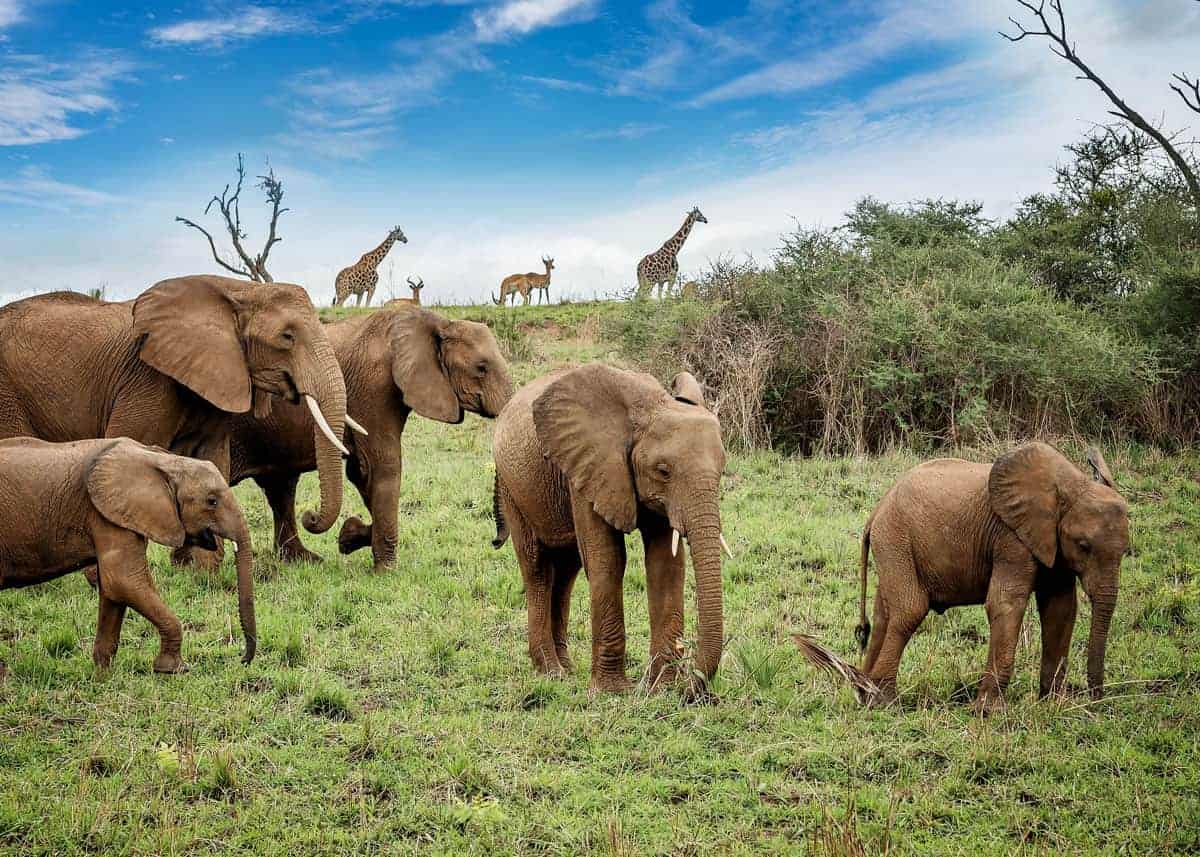
Don’t forget a thing with this complete African safari packing list.
13 Fun Facts About African Bush Elephants
Did you know that the biggest land mammal in the world can be found in Uganda? Yes, it is true! The African bush elephant is the largest land mammal.
According to Nature.org, “the African bush elephant reaches up to 24 feet in length and 13 feet in height.” African Bush Elephants are magnificent creatures, but there is likely a lot you do not know about them!
Here are thirteen interesting facts about African bush elephants.
1. African Bush Elephants Live in the Savanna, Deserts, and Rainforest
Talk about ecological diversity! The African Bush Elephant lives in many different environments.
The African savanna is a tropical grassland with dispersed trees such as the Acacia Tree and Jackalberry tree. It is known for wide-open plains and warm sunny weather most of the year.
The rainforests are a totally different environment! They are along the Congo river basin in the middle of Africa. With over 8,000 different plants in the rainforests, there is far more ecological diversity than there is in the open savanna!
2. Elephant Herds Are Female Dominant
The females run and manage the herd at all times. Adult male elephants, called bulls, spend their life apart from the herd and only return when it is time to mate.
Offspring are kept, regardless of gender, for an average of eight years. During this time males are socially active within the herd but are less emotionally connected than their female counterparts. After this period of growth and development, the male offspring are sent to be alone and live their life apart from the herd.
Elephants are one of several species that have a matriarchal society.
What other species are matriarchal? Honey Bees, lions, meerkats, mole rats, ants, killer whales, and lemurs are all matriarchal lead species. The females call the shots, and in some cases, the males are sent away until it is time to mate.
3. Their Head is a Quarter of Their Body Weight
Could you imagine if your head weighed as much as 25% of your body? The African Bush Elephant can!
While the average weight for an African Bush Elephant is eleven tons, the head can weigh up to three tons. Elephant trunks are heavy, so it makes sense that their heads would be such a large percentage of their total weight.
The average adult human head weighs between ten and eleven pounds. That’s approximately eight percent of their body weight.
Here’s what elephants eat – and the volume of food, water, and mothers’ milk.
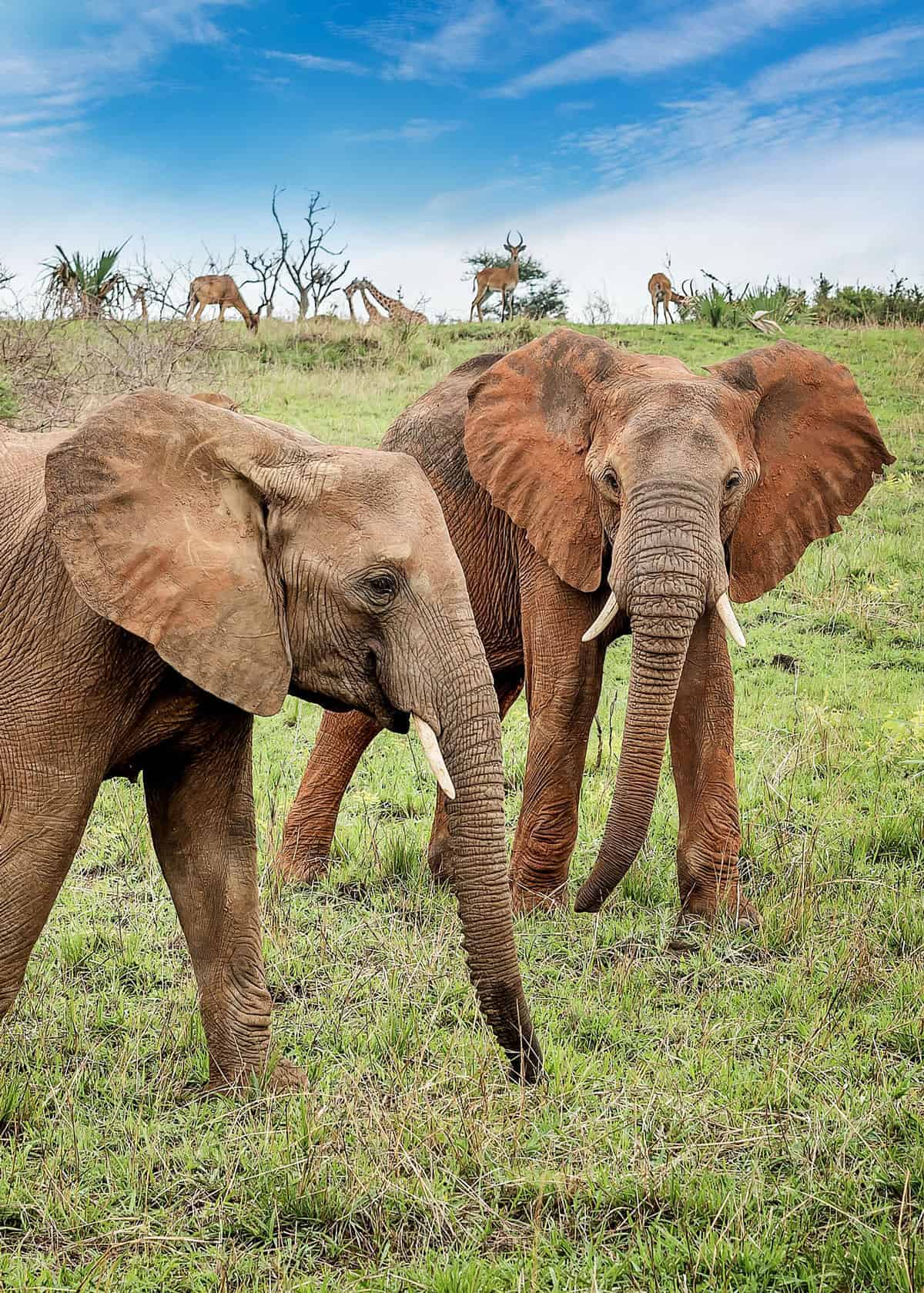
How’s your Swahili? Check out our guide to 100+ animal names in Swahili.
4. African Elephants Can Live up to 70 Years
That’s a long time for an animal! The average dog lives to be 12-15. Humans live on average 70-90 years. The African bush elephant is the second-longest living land mammal behind humans.
For context, some African elephants born in 1949 are still alive today!
The only other non-human species that compete with them are down in the deep blue sea. Long-finned eels, bowhead whales, Greenland sharks, and ocean quahogs all live well over a hundred years. If you ever see them you better be wearing a good scuba suit!
Here’s more about how long elephants live.
5. The Trunk of the Elephant Has 40,000+ Muscles and Tendons
That’s a staggering number of muscles! The human body has 700 muscles inside of it. It would take the muscles of 58 human beings just to power one trunk of the elephant.
That’s some serious lifting power!
The average elephant can lift 300 kilograms of weight with the trunk. Here are a few things an Elephant can lift with its trunk:
- Domestic Pigs
- Two Reindeer
- Two Giant Pandas
- Five toilets
- Ten Dalmations
6. Elephants Can Snorkel Without Any Assistance
Elephants use their trunks for more than mere drinking and lifting. When elephants walk across rivers, their entire bodies go underwater. However, they can lift their trunks into the air and breathe perfectly fine.
This is a powerful tool elephants use to get across the African terrain!
It serves an even more powerful purpose if they are being chased by an enemy animal such as a lion. All the elephant has to do is go to a deep spot in the river and send their trunk above water. Eventually, the predator will lose sight of the elephant and give up.
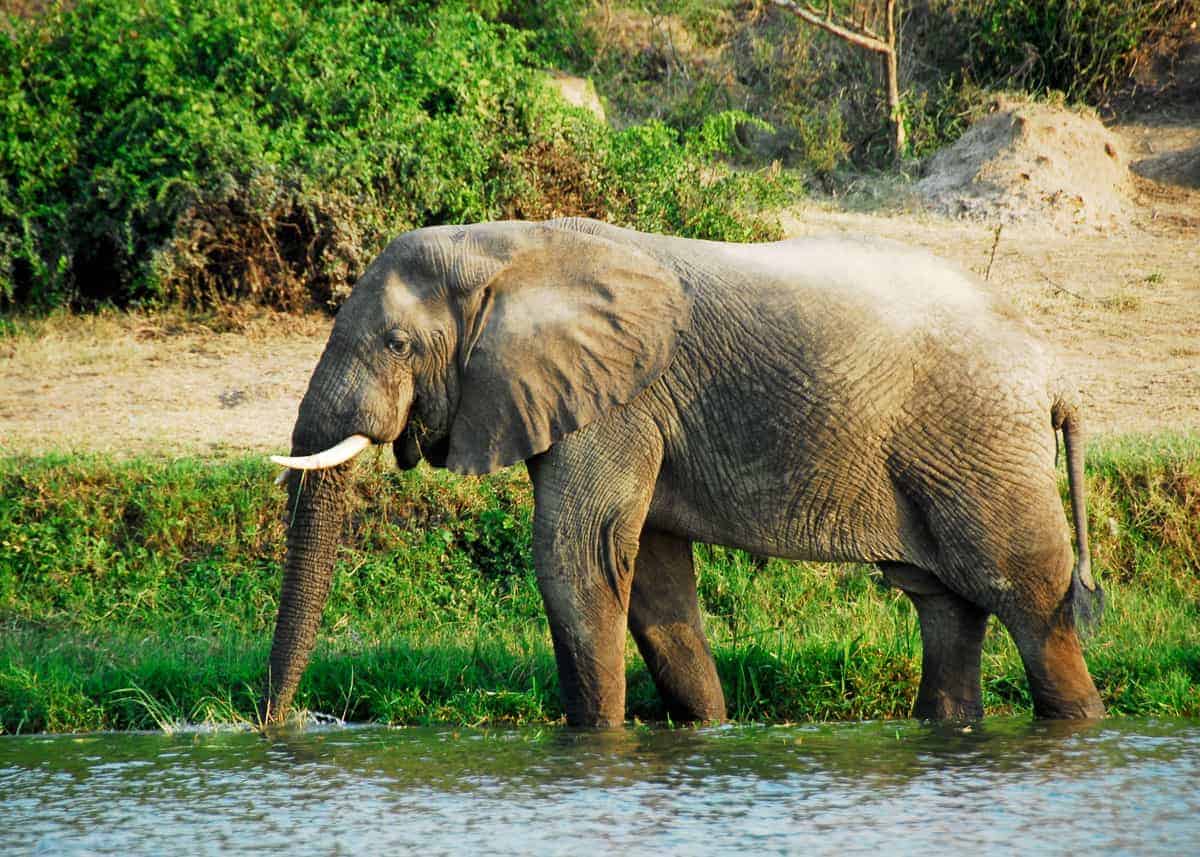
7. Their Tusks Are Teeth
Unlike Asian elephants, both male and female African bush elephants have tusks.
Tusks function like incisors. They are similar to any other type of animal teeth. However, these “teeth” are used for more than just food. African bush elephants use their tusks for foraging, digging, and fending off rare attacks from predators such as leopards and lions.
When you look at an African bush elephant, you see two-thirds of its tusks. The final third of their tusks are embedded into the elephant’s head. That is where the tissue, pulp, and nerves of the tusk are located.
8. There Are Only 300,000 Elephants Left
Unfortunately, African Elephants are threatened and nearing the “Endangered” status. Elephant poaching and the destruction of their environment have led to African bush elephant population numbers falling drastically over the last century.
Hunting elephants is a popular sport in Africa. Poaching elephants for their tusks is increasingly popular among hunters from North America. In 1989, the poaching dilemma killed so many elephants that a worldwide ban was put in place to stop the killings. Because of increased regulation and government protection, the elephant population has steadily recovered.
Unfortunately, many hunters disregard the law and travel to Africa to illegally poach elephants. The tusks are taken for their ivory and prestige.
9. Their Scientific (Latin) Name is “Loxodonta Africana”
The African bush elephant is part of the “Animalia” Kingdom. Along with the now-extinct mammoth, it is in the ” Elephantidae” Order.
Differences between African and Asian elephants: Their closest relative is the Asian elephant (“Elephas maximus indicus”).
- Asian elephants are smaller, run slower, and live in Asia.
- Asian elephants are classified as “Endangered.”
10. They Use Their Trunks to Scare Away Enemies
You’ve heard the sound of an elephant’s trunk before. It’s popular in TV shows and movies that feature elephants.
That famous “battle cry” is used for self-defense in the wild. If the elephant is under attack, it will let out a loud cry from its trunk to scare away the foe that is attacking them.
If the herd is nearby, they will hear the call and assist the elephant in need. This can be enough to scare away predators and thwart attacks.
Did you know that elephants are one of the loudest animals on earth?
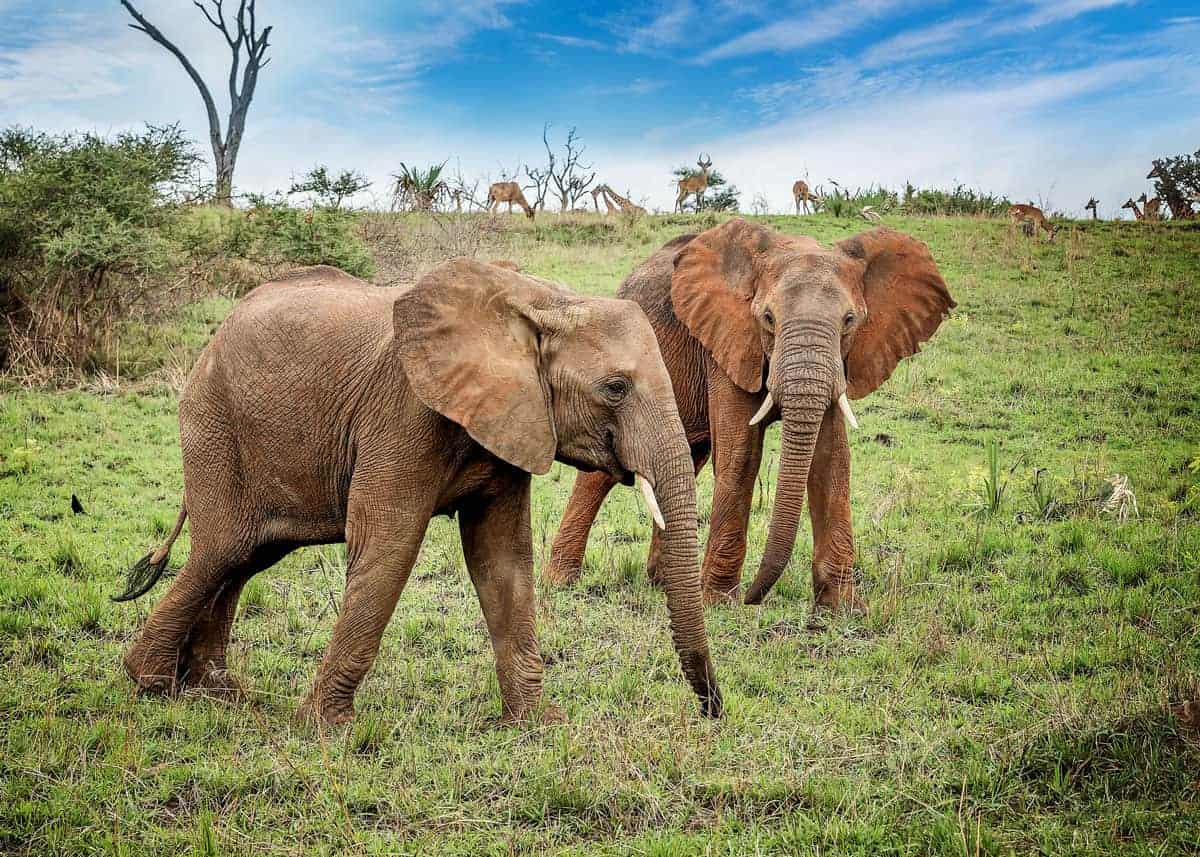
More reading: Uganda’s 10 National Parks (And 4 Wildlife Game Reserves)
11. They Can Smell Water From Miles Away
African elephants have the unique ability to smell water from miles away. This key adaptation allows elephants to travel far away from their current location and still know where the closest water source is.
To do this, the elephant waves his or her trunk in the air to pick up odorant molecules. If it detects moisture in the air, it will determine what direction it came from.
For elephants living in the desert, this is a vital adaptation to their survival.
However, elephants can smell more than just water. Scientists who have studied elephant trunks report that elephants are sensitive enough to pick up the scent of a single blade of grass.
12. Elephants Can Run Up to 25 Miles Per Hour
The African bush elephant can run surprisingly fast for its weight and size! At top speed, they can run at 25 miles per hour. That is faster than the average human!
However, elephants do not “run” in the sense we expect them to. Unlike most land animals, elephants do not move their feet off of the ground. They take longer, quicker strides that allow them to disperse their weight and remain balanced. Here’s more about how fast an elephant can run.
Animals such as lions, which can run at top speeds of 50 miles per hour, move all four legs off of the ground and push their bodies forward.
Since female elephants live in herds, they are rarely targeted by predators such as lions. They do not need to run as fast as other species. Predators prefer to attack vulnerable species that are easy to kill.
13. The Elephant’s Ears Are Designed to Keep Them Cool in the Heat
Many scientists, researchers, and elephant lovers speculate that elephant ears are shaped like Africa.
There is a specific need for this shape!
Africa can reach temperatures up to 150 degrees Fahrenheit. That is one of the hottest temperatures on the planet. The coast of Somalia reaches highs of 145 degrees in the Summer months.
These extreme temperatures affect elephants. That is why their ears are designed to release heat from their bodies. Blood flows into the ears and disperses when the elephant flaps them. This mechanism prevents the elephant from overheating.
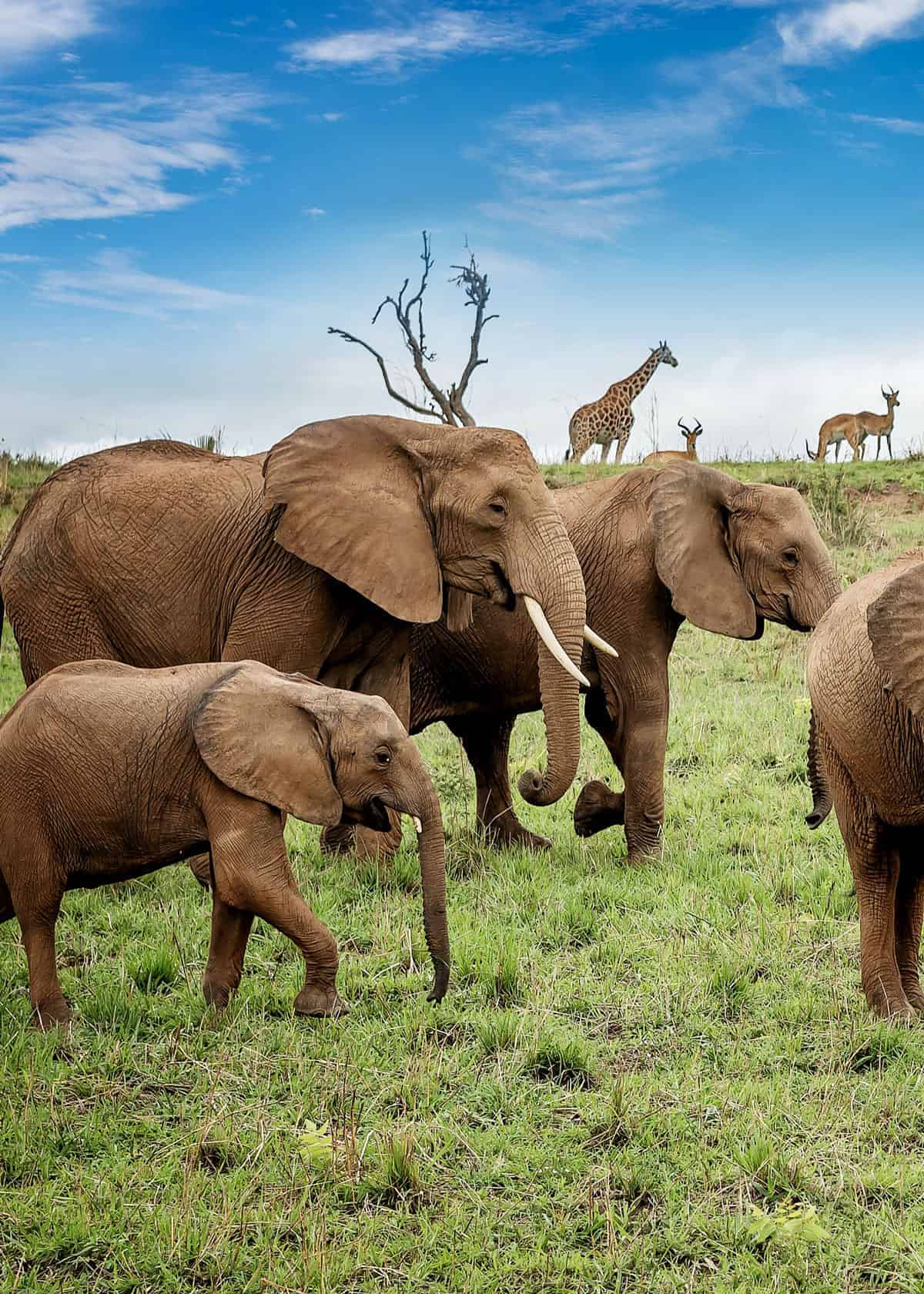
Want to get shots like this? Here’s how to choose the best camera for safari.
Your Turn
Have you seen these giants in person? Have a fact or story to share? Join me in the comments!






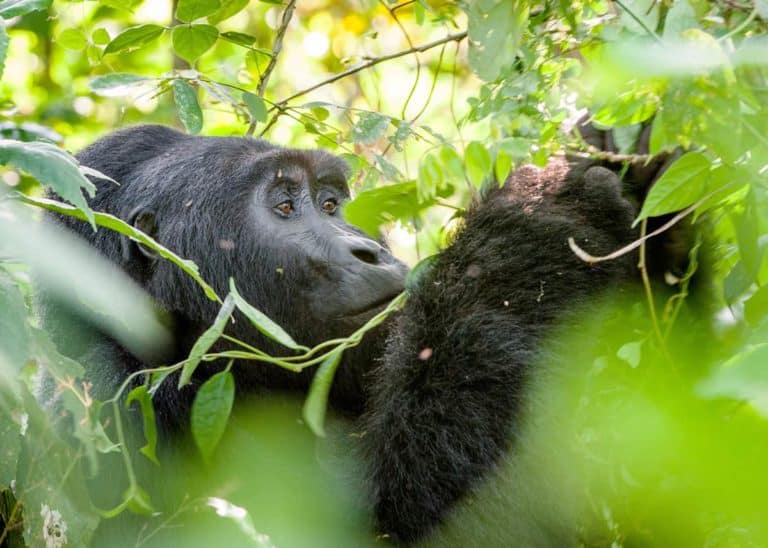
Did you know that they are terrified of mice because they are so small and fast?
How about their intelligence? I grew up in the neighborhood of Mt Kenya forest and encountered elephants in the bush occasionally. One of the legends told is that elephants will remember the route they took from one place to another even decades later. True or false?
i love elephants
Their behaviors make me happy, more so when they charge